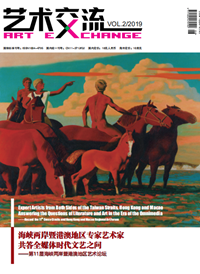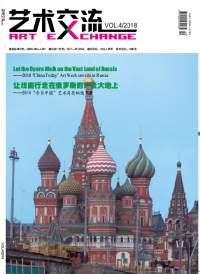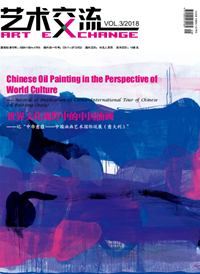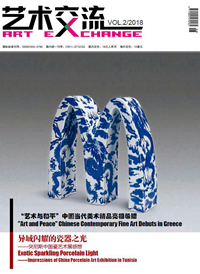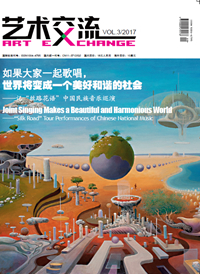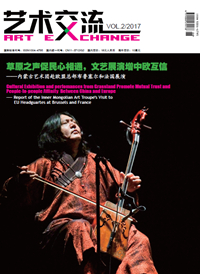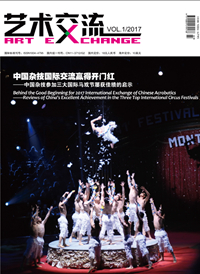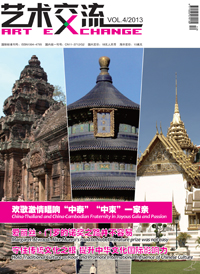
Who, among the Crowd, will Stop to Look at you?

Home of Artisans

Storytellers Arrived at Fair on the Lunar Calendar of January 12th
Early in 1950s, Fei Xinwo, calligrapher and painter, was frequently engaged in receiving foreign cultural friends. He met with famous artists and art societies from USSR, Hungary, Germany, Brazil, Sweden, Finland, Australia, Indonesia and Japan in succession. Some of them had the friendship of art communication with him; some of them kept in touch with him by correspondence and sending reference to each other.
It is said that when Emperor Renzong ruled Yuan Dynasty (1314—1320), there was a storyteller artist named as MA Deping on the Horse Street in Baofeng County, Henan Province. He was versed in telling stories to the accompaniment of sanxian, the Chinese three-stringed plucked instrument. He was noted for his excellent proficiency, exemplary character and countless disciples across China. Once on January 13th of Chinese lunar year, he passed away because of illness. All his disciples hastened to attend the funeral from different regions when they got to know it. The Horse Street was crowded with these storytellers, who were paying their respects by singing and storytelling in order to mourn over the deceased teacher. Ever since then, disciples recruited their own disciples and it has become the custom of going together on January 13th of Chinese lunar year on the Horse Street, from which the Horse Street Storytelling Fair comes.
Certainly, this is just one of the stories narrating the origin of the Fair. What is more, there are other 9 different stories concerning the origin that are popular as well. Despite various sources of this Fair, what actually happened is not recorded accurately in historical books and engraving works. However, it has been generally accepted that the Horse Street Storytelling Fair rose in the late period of Northern Song Dynasty, which is the golden age for the storytelling in the circle of entertainment at that time. When Yuan Dynasty ruled, it took its first shape and became the extremely popular when Emperor Tongzhi of Qing Dynasty came into power (1862—1874). It is said that one year a person was accredited to count the number of storyteller of the Fair and every storyteller attending this Fair was required to present one copper coin at the Temple of Fire God. In the end, there were 2,700 coins which meant that the number of storytellers of that year was this exact number. The Fair has existed for more than 700 years up to now, which continually exists despite all the human or natural disasters.
To tell stories on the Horse Street on January 13th every year has become the custom and spiritual faith of the folk artists. There exists no any form of organization and people feel free to tell their stories out of their own wills. There is also no formal performance stage. They can perform in the wheat field, by the river, on the narrow road with the sky as the curtain and the earth as the stage. Hundreds of artists came together with several companions as a group and they flocked to tell stories one next to another, singing, narrating without any mutual interference. The artists befriend the colleagues with their art of storytelling and singing, while the local people of different ages will come to attend the Fair and enjoy the shows with their own families. Amid thousands of audiences, the peddlers were busy selling commodities as well. You can imagine such a rare art landscape in which people jostle each other in the crowd. The Fair has also developed the following folk forms:
To pay homage to the ancestors: Every artist attending the Fair will go to the Temple of Fire God and prostrate himself before the Fire God and the Founder of Storytelling. Different styles of storytelling have their own Founders. Sanxian artists worship three emperors, viz. Emperors of Heaven, Earth and Human Beings, while artists of Henan styles etc. worship QIU Chuji, who is believed to found two art forms. Folk artists come here to worship Fire God and the Founder with the hope that their business go smoothly and they themselves safe and sound that year. After worshipping, they will practice their art to the image of the Founder and then go to attend the Fair.
To perform the storytelling: It is the most important part of attending the Fair. Every artist should demonstrate his or her talents of all fields and everyone is free to perform on the equal footing. Audiences can choose any performance they enjoy at will. More than dozens of storytellings are performed here in their true sense. The Fair has become the exhibition window through which excellent folk artists display their talents. The musical instruments can be everything; two small copper pieces that strike out the clear sound can be the instrument while the bamboo or wooden leggings can work as well. Any simple musical instrument can turn out to be amazing in their hands.
To book the storytelling performance: To perform at the Horse Street is linked to the local custom of booking the storytelling performance. On January 14th and 16th, local people will invite the artists to have the performance at home. The whole process is called the booking of storytelling performance, in which the artists perform, the local people invite artists and bargain the price of services together. If an artist’s performance is booked on January 14th or 16th, he is not supposed to perform in order to leave chances for others. On many important occasions of the daily life, such as the new construction of house, the birthday party for the elders, the full month of new-born babies, artists are invited to perform. What is more, to invite artists to honor the promise is also a common thing. If there is a patient in one family, the family members will make such a promise in the Temple of Fire God: “If the patient recovers and is healthy again, I will book the performance of three days on end for Fire God.”
Champion Storyteller: In every field there is champion, the Fair is not exceptional as well. In the past, the names of Champion Storyteller are not recorded. Since 1981, the first Champion Storyteller left their names on the registered book; there are 20-odd names. Previously, Champion Storyteller is the just person who has been booked with the highest service price. Recently, the old artists from different regions form the jury committee and evaluate every artist according to the multiple items of service price, costume and arts. After having attended the performance one by one, they will grade the artists and the champion is the person who has won the highest comprehensive score. It is a really unique folk evaluation.
The Competing Performances: Generally speaking, there are more than two grand shows at the Fair in order to fuel the whole performance. They will last for three days on end from January 11th. Several shows are performed on the stage in the approximate places at the same time, which has created the competing atmosphere. The winner belongs to the show with more audiences and passionate applauses. Naturally, the artists will spare no efforts to compete with the counterparts, through which the audiences will enjoy the excellent performance out of the competition.
The Head of Fair: Since the Horse Street Fair is a grand folk event, in the past the annual Fair would have a person who was venerated with organizing capabilities and economic strength as the Head of Fair. He was elected by the local people to preside over the general affairs, including the issues of booking the service, putting on competitive shows, accomodating artists, organizing performance and maintaining order. At that time, the related expense came from the revenues of the Temple of Fire God during the period of the Fair. If the expense ran short, the Head of Fair would decide whether he himself covered the gap or apportioned it to every local people after the Fair. Whenever the Head of Fair reached such a decision, the local people would pay for the fee of Fair without being prodded at the sound of gongs. The balance of the Fair would be publicized on the board after the event as well.
Thanks to China Quyi Artists Association (CQAA)’s efforts of discovering and promoting, the Horse Street Storytelling Fair, the spontaneous folk event, comes into the view of the outside world and becomes the largest-scale folk storytelling grand event in the current world, attracting foreign journalists and writers to attend the Fair and interview. At the meeting of National Quyi Arts Conference in 1979, TAO Dun, the then President of Association asked ZHANG Linyi, the researcher of Henan Quyi study whether there was any storytelling fair in Henan or not. When ZHANG came back to Henan and happened to come across two artists, from whom he knew of the Horse Street Storytelling Fair. In 1980, after his elaborate investigation of the Fair, he presented the investigation report and got it published, which drew lots of attention. In 1981, TAO Dun went to the Fair with the famous storytelling artist LIU Lanfang, which caused a great sensation at that time. TAO specially wrote a poem to record that grand scene. Later, the governmental department joined in promoting the Fair until it is well-known in the world. Nine years ago, CQAA held the National Storytelling Invitational Competition in the Horse Street and there have been nine occasions so far. The participation of professional storyteller has attracted more audiences and expanded its influence.
Recently, there are the topic plaza, the statues of storytellers and other celebrities that are built or erected in the Horse Street. The Chinese Storytelling Art Exhibition Hall is about to be completed this year. The infrastructures of the Fair are more and more complete, while the support for the artists is growing from strength to strength. However, the potential anxiety lurks behind the external prosperous scene. With the passage of times, the Fair is undergoing the change as well. Facing so many entertaining forms, the number of the storytelling audiences is on the decline and the market is shrinking. Many artists find this life is rather hard. Since there is no a bright future ahead, the number of young storytelling learners is shrinking as well. The issue of inheritance has become a problem and some scripts, instruments and storytelling art might come to an end. Although there are still many storytellers at the Fair, the obvious thing is that many of them are aging. Most of the young men come here to attend this activity, without the idea of appreciating the beauty of storytelling. To book the storytelling service is a rare thing as well. The local government has organized some departments to book the service and have it perform in the countryside in the hope of helping some artists. More and more artists come here just to meet old friends and will come back home after the performance of half a day. When the business wave sweeps every corner of society, the local people are still hospitable to artists but the number of accommodating the artists is very few. Some of local people take advantage of this Fair to do make little money.
The storytelling fair comes into being because of the existence of storytellers. As the National Intangible Cultural Heritage, the Horse Street Storytelling Fair is not only just the festival of artists, but also a lively cultural tradition. The future development of the Fair lies on the issues of how to support artists in a better way and how to strike the balance between the governmental support and preserving its folk flavor. The Fair calls for more and more attention from people of all walks of life, who might show concerns for the livelihood of artists. It is really necessary to keep the Fair, the Holy Land and the spiritual home of folk storytelling artists.



